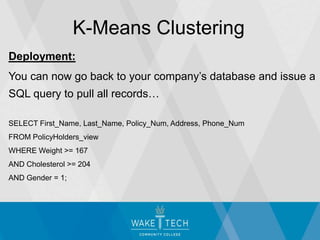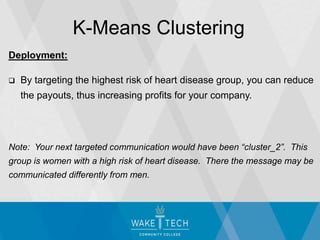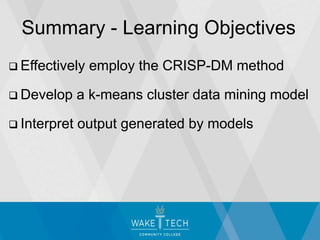This document provides an overview of k-means clustering, including what it is, how it works, and how to apply it using the CRISP-DM method. The learning objectives are to explain k-means clustering, demonstrate proper data formatting, and interpret cluster results. An example applies k-means to insurance policyholder data to identify groups at high risk for heart disease. The clusters help target communications to promote a weight and cholesterol management program.






















